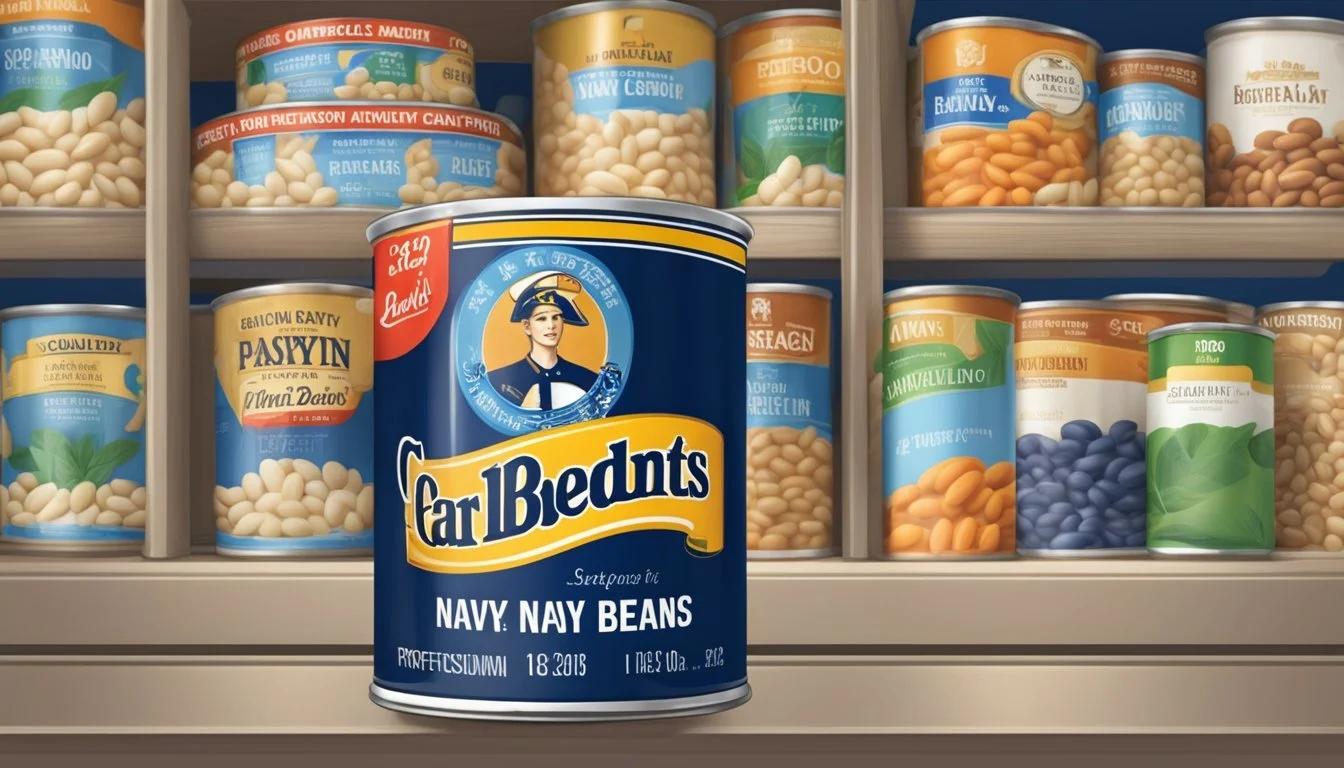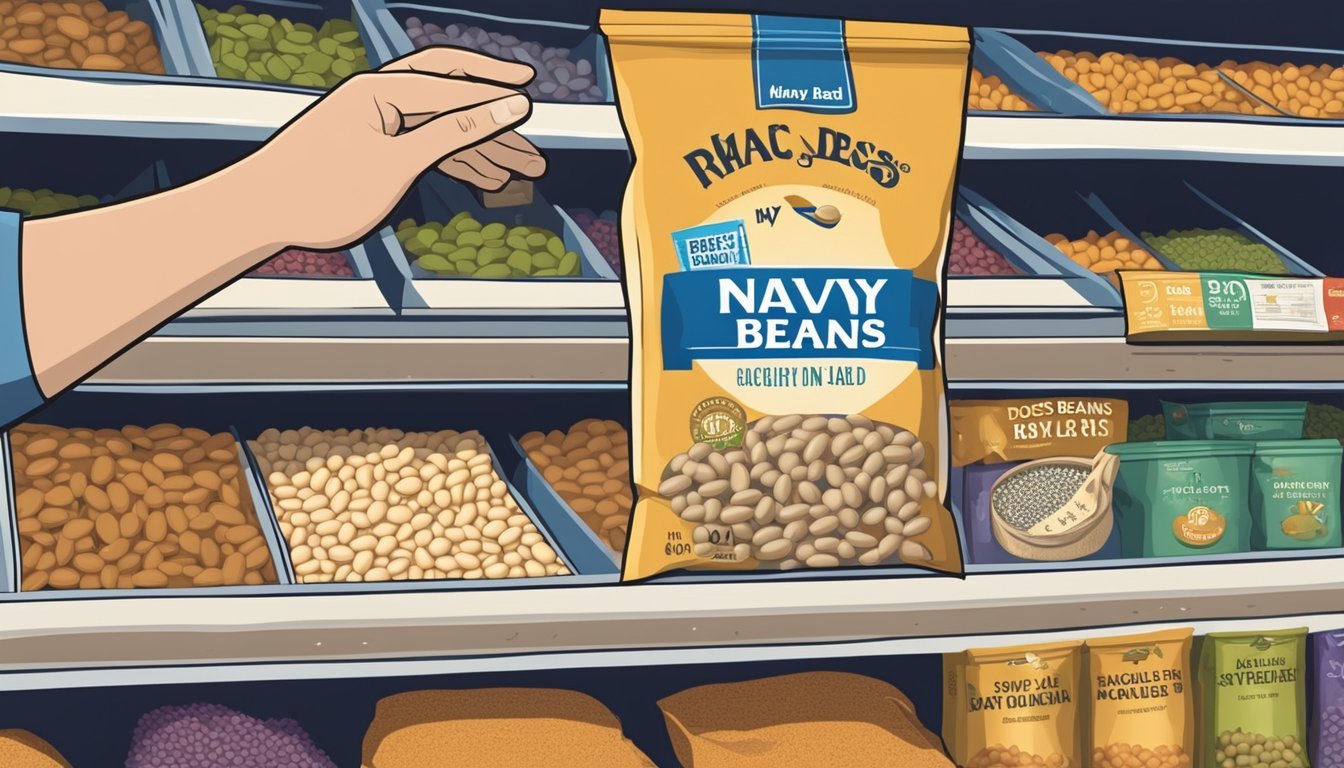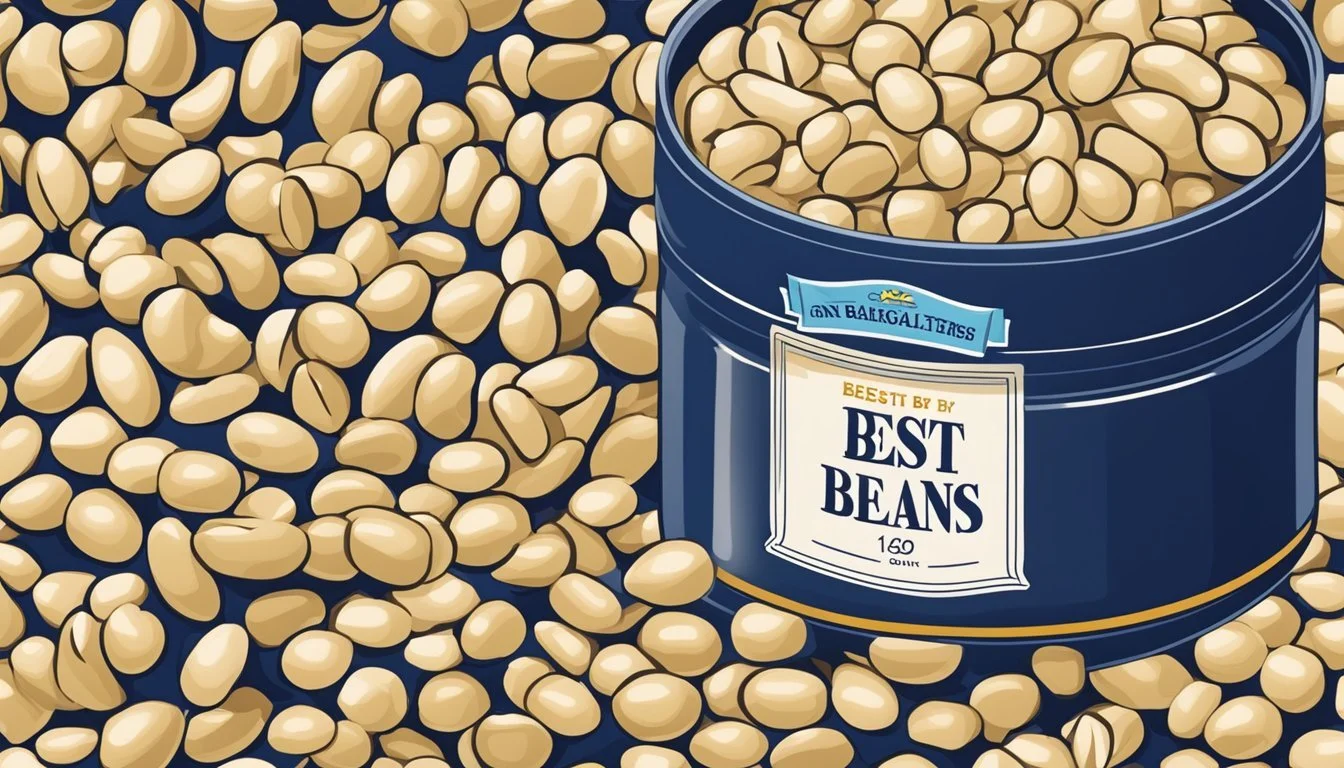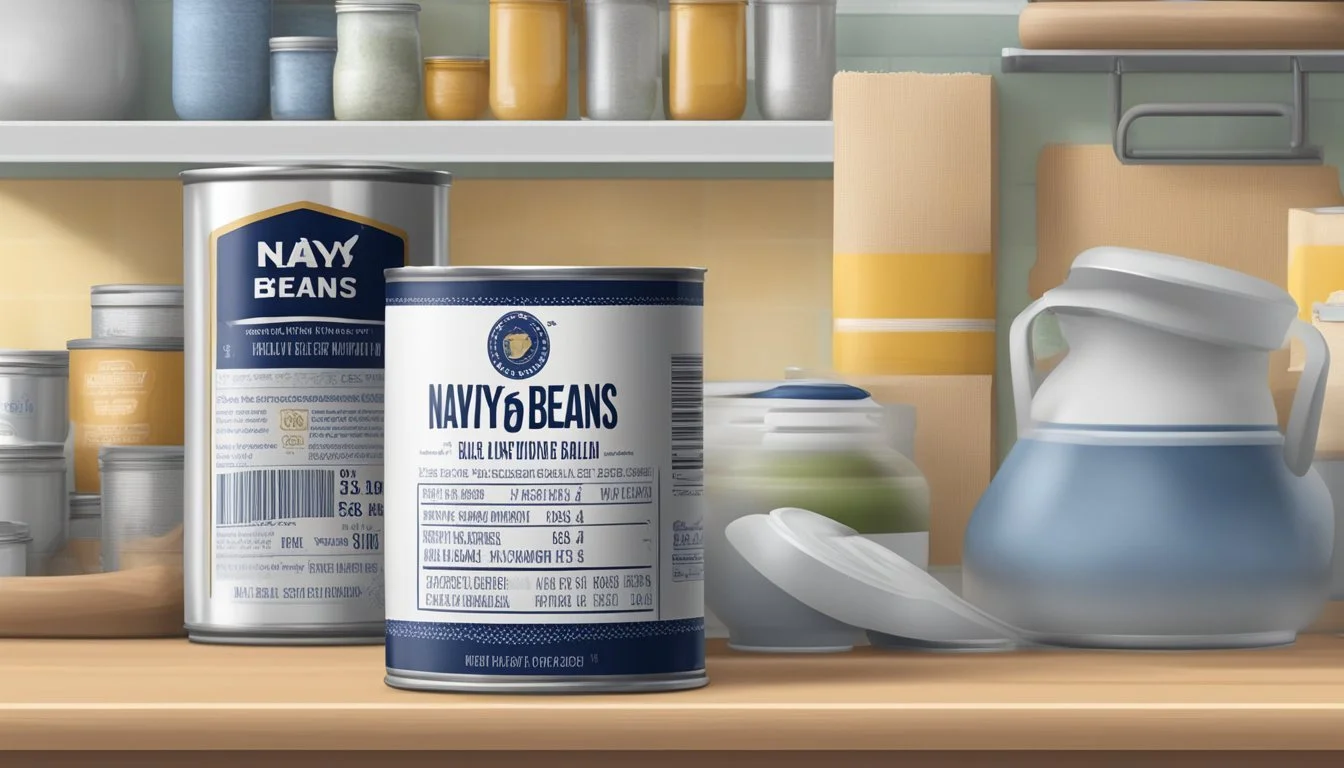Does Navy Beans Go Bad?
Shelf Life and Storage Guidelines
Navy beans are a popular choice in many kitchens due to their versatility and nutritional benefits. While dried navy beans can last for quite a long time, their quality can deteriorate over time. Dried navy beans, if kept in a sealed package and stored in a cool, dry place, can maintain their best quality for up to 2 to 3 years.
It is important to store dried navy beans properly to ensure they remain safe for consumption. Exposure to moisture and air can significantly reduce their shelf life and even lead to spoilage. Look out for signs of spoilage such as a strange odor, visible mold, or mildew, which indicate that the beans should be discarded.
For cooked navy beans, the shelf life is much shorter. They can be refrigerated for about 3 to 5 days or frozen for up to 6 months to preserve their quality. Always ensure to refrigerate or freeze them within two hours of cooking to prevent bacterial growth.
Understanding Navy Beans
Navy beans are a small, white variety of beans, known scientifically as Phaseolus vulgaris. They belong to the legume family, which includes other beans, lentils, and peas.
These beans are particularly valued for their high fiber content. A single serving of navy beans provides a considerable amount of dietary fiber, which supports digestive health.
Navy beans are an excellent source of protein, making them a popular choice for those following plant-based diets. They offer a nutrient-dense profile, with approximately 15 grams of protein per cup.
Rich in minerals such as iron and potassium, navy beans contribute to maintaining healthy blood pressure and support the body's oxygen transport system. One cup provides around 5 mg of iron and 700 mg of potassium.
When considering vitamins, navy beans offer essential vitamins including B vitamins, which are crucial for energy production and overall metabolic functions. They also contain a small amount of Vitamin C.
In terms of storage, dried navy beans can last 2-3 years if kept in a cool, dry place. Cooking these beans enhances their palatability, but cooked navy beans should be refrigerated and consumed within 3-5 days for optimal taste and safety.
By integrating navy beans into meals, individuals can benefit from their nutritional profile, contributing to a balanced and healthy diet.
Purchasing Navy Beans
When purchasing navy beans, it's crucial to assess their quality and check key details like the date of purchase and expiration. Proper selection can significantly impact their shelf life and overall usability.
Assessing Bean Quality at Purchase
When selecting navy beans, start by checking for uniform size and color. High-quality navy beans should be free from discoloration and blemishes. Avoid any packages with broken or chipped beans.
Smell is another indicator of quality. Freshly packed navy beans should have a mild, earthy scent. Any sour or off-putting odors can be a sign of mold or contamination.
Packaging matters for maintaining peak quality. Look for tightly sealed bags or containers. Avoid bulk bins if unsure about turnover or storage conditions, as beans exposed to air and moisture can have a shorter shelf life.
Date of Purchase and Expiration
Pay close attention to the "best by" or "expiration date" on the package. This date generally indicates when the beans will retain their best quality under proper storage conditions. It's advisable to note the date of purchase and plan to use the beans within the recommended time frame.
Most dried navy beans can maintain peak quality for 2-3 years if stored in a cool, dry place. Keeping the original packaging sealed will help extend the shelf life. For best results, store the beans in airtight containers in a temperature-stable environment to prevent premature quality degradation.
Recognizing these markers ensures you procure navy beans that will last, maintaining their quality and nutritional value.
Storing Navy Beans Properly
Proper storage of navy beans ensures they remain fresh and safe to eat for longer periods. This section covers how to store dried navy beans and cooked navy beans effectively.
Optimal Dry Storage Conditions
Dried navy beans should be stored in a cool, dry place, such as a pantry or a cupboard. Air exposure, moisture, and heat can significantly reduce their shelf life.
The ideal storage location is a dark place with a constant temperature, as fluctuations can degrade the beans. Storing them in airtight containers helps keep out moisture and pests. When done correctly, dried navy beans can last up to 2-3 years. Using Mylar bags with oxygen absorbers can extend the shelf life to over 25 years.
Refrigeration and Freezing
Cooked navy beans have a shorter shelf life and should be kept in the refrigerator. They can last for about 3 to 5 days when stored properly. Place them in an airtight container to prevent them from absorbing odors and drying out.
For longer storage, freezing is recommended. Cooked navy beans should be frozen in airtight containers or heavy-duty freezer bags. They maintain their best quality for up to 6 months in the freezer. To preserve their texture and flavor, ensure that they are cooled and stored within two hours of cooking.
Airtight Containers and Preservation
Airtight containers are essential for preserving the quality of both dried and cooked navy beans. For dry navy beans, containers like glass jars or plastic bins prevent exposure to air and moisture, which can cause spoilage.
For cooked beans, use containers that are appropriate for both refrigeration and freezing. Label the containers with the date to keep track of storage times. This practice helps in maintaining food storage hygiene and ensures the navy beans are consumed within the best quality period.
By following these storage practices, navy beans can remain a nutritious and versatile ingredient for various meals without the worry of spoilage or quality loss.
Signs of Navy Beans Spoilage
Navy beans can go bad if not stored or handled properly. Key indicators of spoilage include changes in color, smell, texture, and the presence of pests.
Visual Inspection: Color and Discoloration
The first step in detecting spoilage in navy beans is to examine their color. Fresh navy beans should have a uniform, off-white or cream color. If you notice any unusual discoloration, such as dark spots, patches, or overall dullness, this is a clear sign that the beans may have gone bad. Discoloration often indicates that the beans have been exposed to moisture or contaminants, which can lead to spoilage.
Smell and Odor Indicators
Fresh navy beans typically have a neutral smell. If the beans emit a sour, musty, or rancid odor, it's a strong indication of spoilage. This unpleasant smell is usually caused by microbial growth or prolonged exposure to moisture. Always smell the beans before cooking, as an off-putting odor is a reliable sign that they should be discarded.
Texture and Mold Growth
Inspecting the texture of navy beans is another crucial step. Fresh beans should be hard and smooth. If they feel slimy, soft, or sticky, they have likely spoiled. Additionally, mold growth is a definitive sign of spoilage. Look for any white, green, or black fuzzy spots on the beans. Mold can develop if beans are stored in humid or damp conditions.
Infestation and Pests
Pests such as weevils and other insects can infest navy beans, especially if they are not stored in airtight containers. Look for tiny holes in the beans, moving insects, or web-like structures inside the storage container. An infestation not only affects the quality and safety of the beans but also indicates that they should be discarded immediately to prevent spreading pests to other food items.
By closely inspecting the visual, olfactory, and textural qualities of navy beans, you can effectively determine their freshness and decide whether they are safe to consume. Paying attention to these spoilage signs can prevent foodborne illnesses and ensure high-quality meals.
Maximizing Freshness and Longevity
To keep navy beans fresh and extend their shelf life, it's critical to store them properly and cook them correctly.
Proper Planning and Usage
Navy beans should be stored in a cool, dry place. For dried navy beans, keeping them in an airtight container prevents exposure to air and moisture, which can shorten their shelf life. In sealed packages, dried navy beans can be preserved for up to 2-3 years at room temperature.
Cooked navy beans, on the other hand, have a shorter shelf life. Once cooked, they should be refrigerated within two hours to ensure safety and can last in the refrigerator for 3-5 days. For prolonged storage, freezing cooked navy beans is recommended; they can remain in good quality for up to 6 months.
Cooking Time and Techniques
Proper cooking is essential to maintaining the taste and texture of navy beans. After soaking, boil the beans for 1 to 1.5 hours until tender. Using fresh water for boiling and adding herbs like garlic or onions can enhance flavor without compromising shelf life.
It's important to avoid overcooking as it can make the beans mushy and affect their usability in dishes. Monitoring the cooking time ensures that the beans retain their nutritional value and optimal texture. Properly cooked navy beans can then be cooled and stored according to the guidelines mentioned to maximize their use in future meals.
Health Considerations and Risks
Navy beans offer numerous nutritional benefits but consuming spoiled beans can lead to significant health risks. Understanding both the benefits and potential dangers is crucial.
Nutritional Value and Benefits
Navy beans are rich in complex carbohydrates and dietary fiber.
A half-cup serving of these beans provides around 23.7 grams of complex carbohydrates and 9.6 grams of fiber. These nutrients contribute to sustained energy levels and improved digestive health.
Protein content is another valuable component, with roughly 15 grams per cup of cooked navy beans.
Additionally, navy beans contain various vitamins and minerals, including iron, magnesium, and folate. The presence of apigenin, a type of flavonoid, adds anti-inflammatory and antioxidant properties.
These elements support heart health, blood sugar control, and weight management.
Risks of Consuming Spoiled Beans
Eating spoiled navy beans can pose serious health risks.
When beans are improperly stored, they can develop harmful bacteria or mold. This contamination can lead to food poisoning, manifesting in symptoms such as nausea, vomiting, and diarrhea.
It's essential to store cooked navy beans in the refrigerator within two hours of cooking and consume them within 3 to 5 days. For longer storage, freezing is recommended.
Toxins can also be a concern with undercooked beans, as they may contain lectins, which cause gastrointestinal distress. Proper cooking and handling practices are vital to ensure safety.
Incorporating Navy Beans into Your Diet
Incorporating navy beans into your diet can provide a nutritional boost and add variety to your meals. They can be used in numerous recipes, from dips and soups to salads and stews.
Delicious Recipes and Ideas
Navy beans are versatile and can be featured in various dishes. Navy bean dip makes for a nutritious and tasty snack. Blend the beans with garlic, lemon juice, and olive oil for a creamy texture.
Another option is to create a hearty navy bean curry. Simmer cooked beans with tomatoes, onions, and spices for a flavorful meal. Navy bean brownies are an unexpected yet delicious way to enjoy these beans, offering a nutrient-packed dessert.
Salads, Soups, and Stews Enhancement
Navy beans add texture and protein to salads. Toss cooked beans with mixed greens, vinaigrette, and vegetables. They can transform a basic salad into a filling meal.
In soups and stews, navy beans provide sustenance and thickness. Add them to vegetable soups or hearty stews. A simple navy bean and vegetable stew can be made with beans, carrots, potatoes, and broth.
Adding navy beans to these dishes not only enhances flavor but also boosts the nutritional value, making meals more satisfying.
Additional Tips for Navy Bean Storage
Proper storage of navy beans ensures their longevity and maintains quality.
Dry Beans
Dry navy beans can last for 2 to 3 years when stored in a cool, dry place. Mylar bags with oxygen absorbers prolong shelf life up to 25 years. Keep packages tightly closed to protect from moisture and pests.
Cooked Beans
Cooked navy beans should be refrigerated within two hours. They last for 3 to 5 days in the refrigerator. For longer storage, freeze them in airtight containers or freezer-safe bags. Frozen beans are best used within 6 months.
Labeling
Clearly label stored beans with dates to monitor freshness. This is especially helpful when using methods like freezing.
Room Temperature Storage
Store dry beans in an environment free from excessive heat and humidity. Utilize airtight containers to ensure maximum freshness.
Marinating and Adding Flavor
When cooking, adding ingredients like garlic or herbs can enhance flavor without affecting storage guidelines.
FoodKeeper App
Consider using the FoodKeeper app for additional storage tips and reminders on when to use stored beans.
Expert-Recommended Guidelines
Follow guidelines provided by reputable sources such as Utah State University Extension and the U.S. Department of Agriculture for best practices in bean storage.
These tips will help maintain the quality and safety of navy beans, ensuring they remain a dependable part of your pantry.







